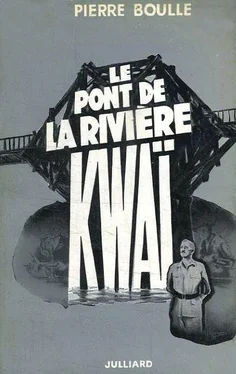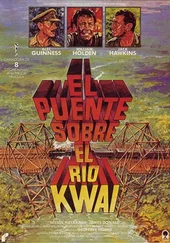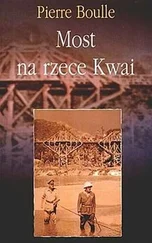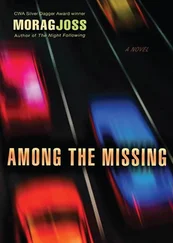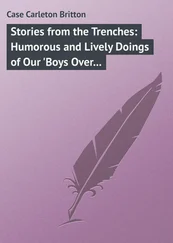Zero hour drew nearer and nearer as the rails stretched further and further along the embankment at the cost of countless hardships suffered by the Allied prisoners of war in Burma and Siam. Shears and his two companions had followed the daily progress of the line. Joyce spent hours amending his map and keeping it up to date according to the latest information received. Every week he added to the line in red pencil which represented each newly completed section. The line was now almost unbroken from Bangkok to Rangoon. The more important river crossings were indicated by a cross. The particulars of each construction were noted down on slips of paper, carefully kept up to date by Warden, who liked to have everything neat and tidy.
With their information on the line growing more complete and more accurate, their attention was irresistibly drawn to the River Kwai bridge, which had attracted them right from the start by its many advantages. With their specialized knowledge of bridges, they had been amazed by the exceptional number of circumstances favorable to the plan which they had instinctively started to work out, a plan which combined the practical sense and the imagination typical of the Plastic and Destructions Company, Ltd. Prompted by instinct as much as by logic, they had gradually come to pin all their faith and hopes on the River Kwai bridge and on nothing else. They had considered a number of other bridges just as carefully and had discussed their respective advantages, but had ended up by choosing this one, which seemed naturally and purposely designed for them as an operation target. The “big show,” which was at first no more than a vague, abstract idea existing only in the imagination, was now represented by a concrete body in time and space—a vulnerable target, in other words, liable to every contingency, to every degradation of which the mind of man is capable, and especially liable to annihilation.
“This isn’t a job for the R.A.F.,” Shears had observed. “It’s not easy to destroy a wooden bridge from the air. If the bombs find their mark only two or three arches are damaged. The rest are just knocked about a bit. The Japs can patch it up in no time—they’re past masters at that sort of thing. Whereas we can not only blow the whole thing sky-high and shatter the piles at water level, but also time the explosion for when a train is actually crossing the bridge. Then the whole convoy’ll come crashing down into the river, increasing the damage and putting every beam out of action. I’ve seen it happen before. Traffic was held up for weeks. And that was in a civilized part of the world where the enemy was able to bring up cranes. Here they’ll have to detour in the line and build the bridge all over again—not to mention the loss of a train and its load of war material. What a show! I can just see it…”
All three could imagine what a show it would be. The attack had assumed concrete shape over which the imagination could wander at will. A succession of mental snapshots, some of them underexposed, others in bright technicolor, disturbed Joyce’s sleep. The former appertained to the period of clandestine preparation, the latter culminated in such a brilliant picture that the smallest detail stood out amazingly sharp and clear: the train poised above the gully, with the River Kwai sparkling underneath between two blocks of jungle. His own hand was clutching the plunger. His eyes were fixed on a certain point in the center of the bridge. The distance between that point and the engine was rapidly decreasing. He had to push the plunger down at the right moment. The distance between them was now only a few feet, only one foot. At that very moment he automatically pushed down the plunger. On the bridge which he saw in his dreams, he had already reconnoitered and found a suitable spot, exactly halfway across.
One day he had anxiously exclaimed: “I only hope the Air Force chaps won’t have a go at it, sir, before we do.”
“I’ve already sent a message to tell them to keep out of it,” Shears had answered. “I don’t think we’ll be worried by them.”
During this period of inactivity countless reports had come in, all referring to the bridge, which the partisans were keeping under observation from the top of a nearby hill. They themselves had not yet approached it, in case the locals got wind of the presence of white men in the area. They had had it described to them hundreds of times, and the more intelligent agents had even made a drawing of it in the sand. From their hideout they had followed every stage in its construction, and were amazed by the unusual method and system which seemed to govern each successive phase and which were confirmed by every report. They were used to sifting the truth from every rumor, and had quickly detected a feeling akin to admiration in the partisans’ description of the bridge. The Siamese were not qualified to appreciate the technical genius of Captain Reeves, nor the organization for which Colonel Nicholson was responsible, but they were fully aware that this was no shapeless scaffolding in the usual Japanese style. Primitive people have an instinctive appreciation of applied art and design.
“God Almighty!” Shears would sometimes cry out in desperation. “If what our chaps say is true, it’s a second George Washington Bridge they’re building. They’re trying to compete with the Yanks!”
Such unusually lavish work, amounting almost to extravagance—for according to the Siamese, there was a road running alongside the fine, which was wide enough for two trucks abreast—was an intriguing but disturbing prospect. An installation of this size would almost certainly be more closely guarded than ever. On the other hand, it might be of even greater strategic importance than he had thought, so that attacking it would be all the more worthwhile.
The natives had quite a lot to say about the prisoners. They had seen them working almost naked in the scorching sun, working without a break and under strict surveillance. When they heard this, all three of them forgot about their scheme and gave a moment’s thought to their wretched fellow countrymen. Knowing the Japs as they did, they could well imagine how far their brutality would go in order to get a job like this one finished.
“If only they knew we were in the offing, sir,” Joyce had said one day. “If only they knew this bridge of theirs was never going to be used, it might raise their morale a bit.”
“Perhaps,” Shears had answered, “but we can’t afford to contact them. That’s out of the question, Joyce. In our job security’s the first essential, even among friends. They’d let their imagination run riot. They’d start trying to help us and might give the whole show away by having a go at the bridge themselves. The Japs would get wind of it, and the only result would be terrible reprisals. No, they’ve got to be kept out of it. We mustn’t allow the Japs even to think of the possibility of the prisoners’ co-operating with us.”
One day Shears had suddenly decided to test the reliability of the fabulous reports which were coming in every day from the River Kwai.
“One of us will have to go and have a look. The work will be finished any day now, and we can’t go on relying on these chaps’ reports, which seem utterly fantastic. You’d better go, Joyce. I want to know what this bridge is really like, understand? How big is it? How many piles are there? I want the exact figures. How can it be approached? How is it guarded? What are the chances of attacking it? Do what you can, but keep your head down. You mustn’t let yourself be seen at any price, bear that in mind. But for God’s sake, get me some proper information on this bloody bridge!”
“I saw it through my glasses, sir, as clearly as I can see you now.”
Читать дальше
